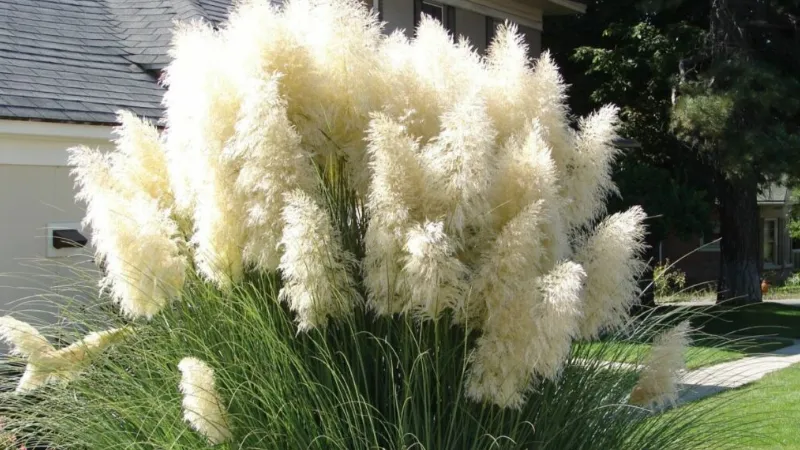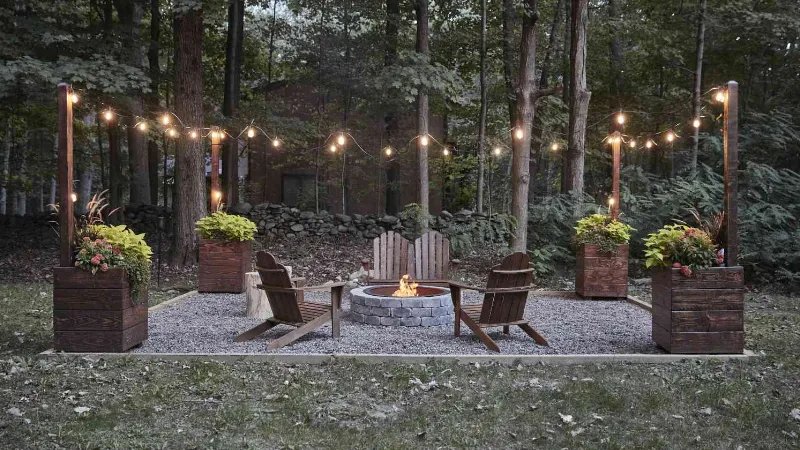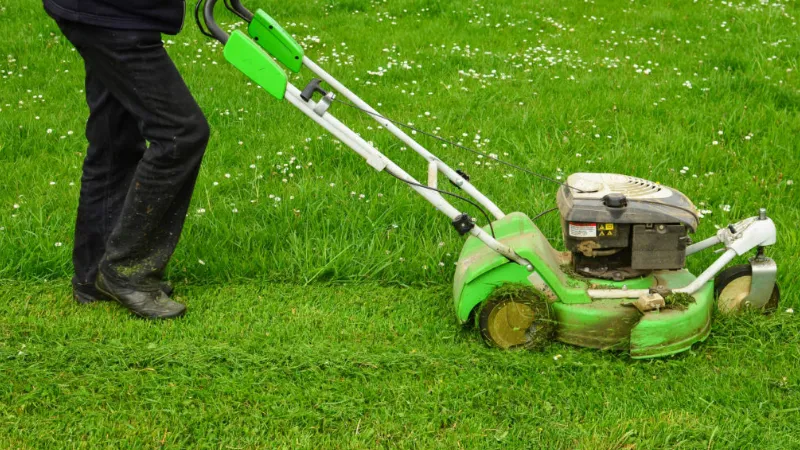Pampas grass is a beautiful ornamental grass whose lush panicles provide a tranquil contrast to the typical yard’s green. When pampas grass is planted can make the difference between a generous perennial plant and a lackluster weedy grass. Below will tell you when to plant pampas grass, where to plant pampas grass, and how to plant pampas grass.
When to plant pampas grass? The best time to plant pampas grass is in the springtime any time between March and May. The most suitable moment, however, will vary depending on where you live. This is especially true if you want your pampas grass to reach a height of 10 feet later in the summer.
Please read on for more detailed information.
When to Plant Pampas Grass?
Pampas grass should be planted in the spring. Even though it grows quickly once it reaches maturity, this ornamental plant can take some time to establish its roots, so planting it in the spring will give it plenty of time to grow strong enough to survive the winter and develop the strength necessary to stay in your garden for years to come.’
Avoid planting your pampas grass seeds much after mid-June as this might not give them enough time to germinate and for the roots to fully establish themselves.
It’s important to take the long-term commitment of this kind of plant into account when sowing pampas grass seeds. Much like how to grow ornamental grasses generally, pampas is incredibly easy to grow and can very quickly overrun your garden. It can be difficult to get rid of even six months after planting, so make sure this fast-growing plant is for you before you take on the responsibility. But, How Long Does Grass Seed Last?
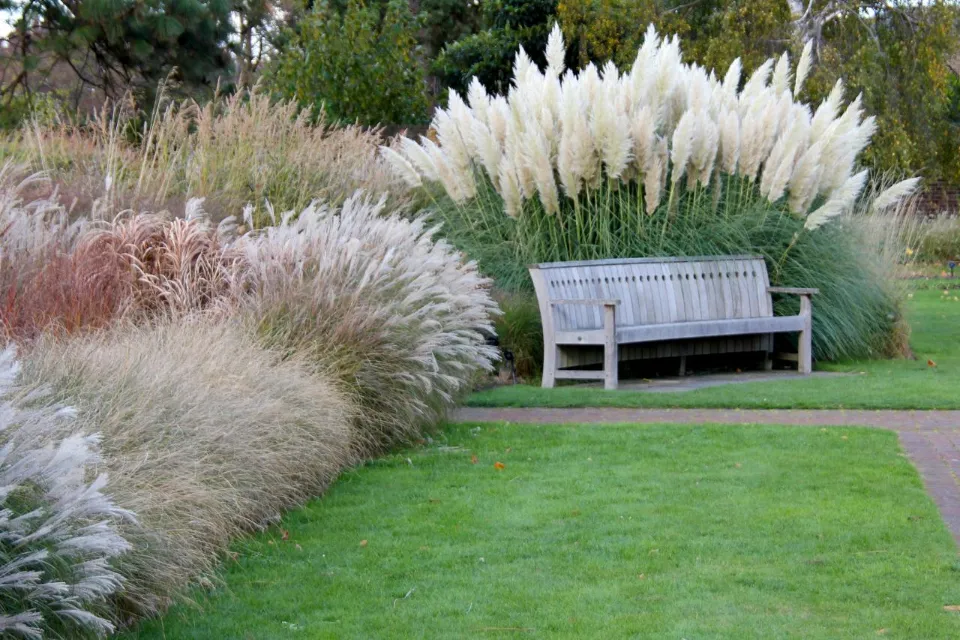
Planting Pampas Grass in Late Winter
If planting is done indoors or in a greenhouse, Rachel says pampas grass can be planted in the later winter months. ‘Indoor planting of pampas grass seeds in trays can hasten root germination and promote the development of strong seedlings. Transplanting these established plugs in spring into an outdoor garden will help to boost their growth.’
Where to Plant Pampas Grass?
Pampas grass needs a warm location, preferably in full-sun. In order to prevent the flowers’ long stalks from bending, the location should be shielded from the wind. It must have enough room to spread out for the ornamental grass. Because its eyrie raches a diameter of one metre plus.
Pampas grass needs a soil that is both nutrient-rich and well-drained. You can add sand or tiny pebbles if the soil is too firm. Sand and pebbles are added to create a draining effect that stops waterlogging. To ensure that the ornamental grass is well supplied from the start, it is advisable to mix in a good dose of compost or slow-release fertiliser such as our Plantura All Purpose Plant Food when planting.
When to Propagate and Plant Pampas Grass?
Pampas grass spreads quickly, so it’s a good idea to divide your established plants every spring to keep them from taking over your entire garden.
It is best to propagate a section of pampas grass at the same time that you plant the seeds for pampas grass. Owners of pampas grass typically have a busy period in early spring. Learning how to take plant cuttings and propagating a section of a pampas plant in early spring will allow the plant an entire growing season to establish a stable root system.
To develop your lawn maintenance strategy, learn how to identify crabgrass. Below will give you a full explanation of what is crabgrass.
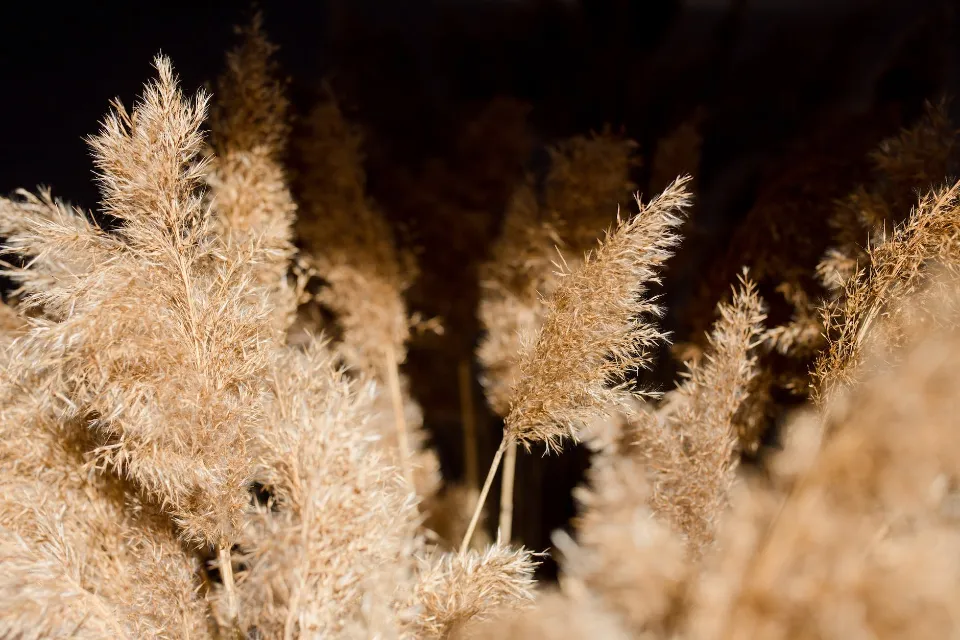
How Long Does Pampas Grass Take to Grow?
Pampas grass is a long-leaved perennial plant with a height of up to 10 feet and a maturation period of three to five years. The pampas grass plant prefers full sunlight and is resilient enough to withstand other weather conditions, including droughts. It can take about one year for it to mature enough for people to harvest seeds from it, but this time will vary depending on the climate and soil quality.
Can you mow wet grass? Short answer: No. Whether it’s early morning and the lawn is still dewy, a rainstorm just ended, or you just ran your sprinklers, you should skip the mow for now. Please read on for more detailed information.
When Does Pampas Grass Bloom?
Fall and winter are the blooming seasons for pampas grass.
Pampas grass is a stunning plant that provides a glimmer of warmth when the weather begins to cool off. It is tall and has long, wispy leaves. Pampas grass is frequently found in California and other warm places, but it is also ideal for colder climates, where it can be grown in containers on decks or patios.
Pampas grass is generally planted with full sun exposure and is most at home in hot, dry climates. Because of its shallow root systems, it may be vulnerable to drought if not given enough water. Pampas grass is also a very fast-growing plant, growing up to 6 feet tall in just one year!
Read about Why a Clover Lawn is Better Than a Grass Lawn?
Pampas Grass Growth Stages
The pampas grass plant makes a beautiful ornamental. A coarse, upright perennial, it can reach a height of 10 feet. Pampas grass is a hardy plant that grows best in full sun. Early in a plant’s life, there are five stages of growth that can be seen.
The seedling stage, which lasts for two to four weeks, is the first phase. Tufting takes place in the second stage, which can take one to three months. The third stage is the lateral branching stage, which lasts between six and nine months. The maturity or flowering stage, which lasts for roughly a year or until it begins to produce seeds for reproduction, is the fourth state. Finally, this grass goes through a stage of maturation that can last between 10 and 15 years before it dies.

FAQs
What Climate is Best for Pampas Grass?
Pampas grass is a type of grass that grows in warm climates and is found in the South America and some of the United States. This warm-weather plant, which is native to Argentina and resembles a tropical hardwood, is hardy and thrives in areas of the United States with mild winters and warm summers.
Is Pampas Grass Hard to Maintain?
Under the right conditions, pampas grass is low maintenance and grows easily and quickly. Although Hawaii and New Zealand have outright banned the grass, many states view it as an invasive species.
Is Pampas Grass Quick Growing?
Pampas grows fast, so you can expect to it to reach full height within months, though pampas grass grown from seed won’t flower for at least two years.
What Happens If You Don’t Cut Back Pampas Grass?
If you don’t cut back your ornamental grasses, they not only might look untidy with depreciated foliage, but they also might spread their seeds in unwanted areas. Additionally, it might be challenging for new foliage to push through the old foliage in the spring.
Does Pampas Grass Need Full Sun?
Pampas grass grows and flowers best in full sun, or at least a half day of direct sunlight. It requires little maintenance once established, is resistant to drought and deer, and has few pest issues. Additionally, it can withstand salt spray, making it the perfect plant for coastal landscaping.
Summary: When to Plant Pampas Grass?
Pampas grass is a perennial that can be planted all year long. Late in the spring, following the last frost, is the best time to plant. The grass will then have enough time to adjust to its new location before the following winter and grow in the best way possible. If you choose to plant in the fall, there is a chance that the pampas grass will rot or even suffer frost damage because of the increased wet weather. Later in the year, though, it is also possible to plant with care.
If you have any questions, please leave a comment. My Prime Home tries to give you the best home improvement information. Don’t forget to share the post. Thank you for reading.
